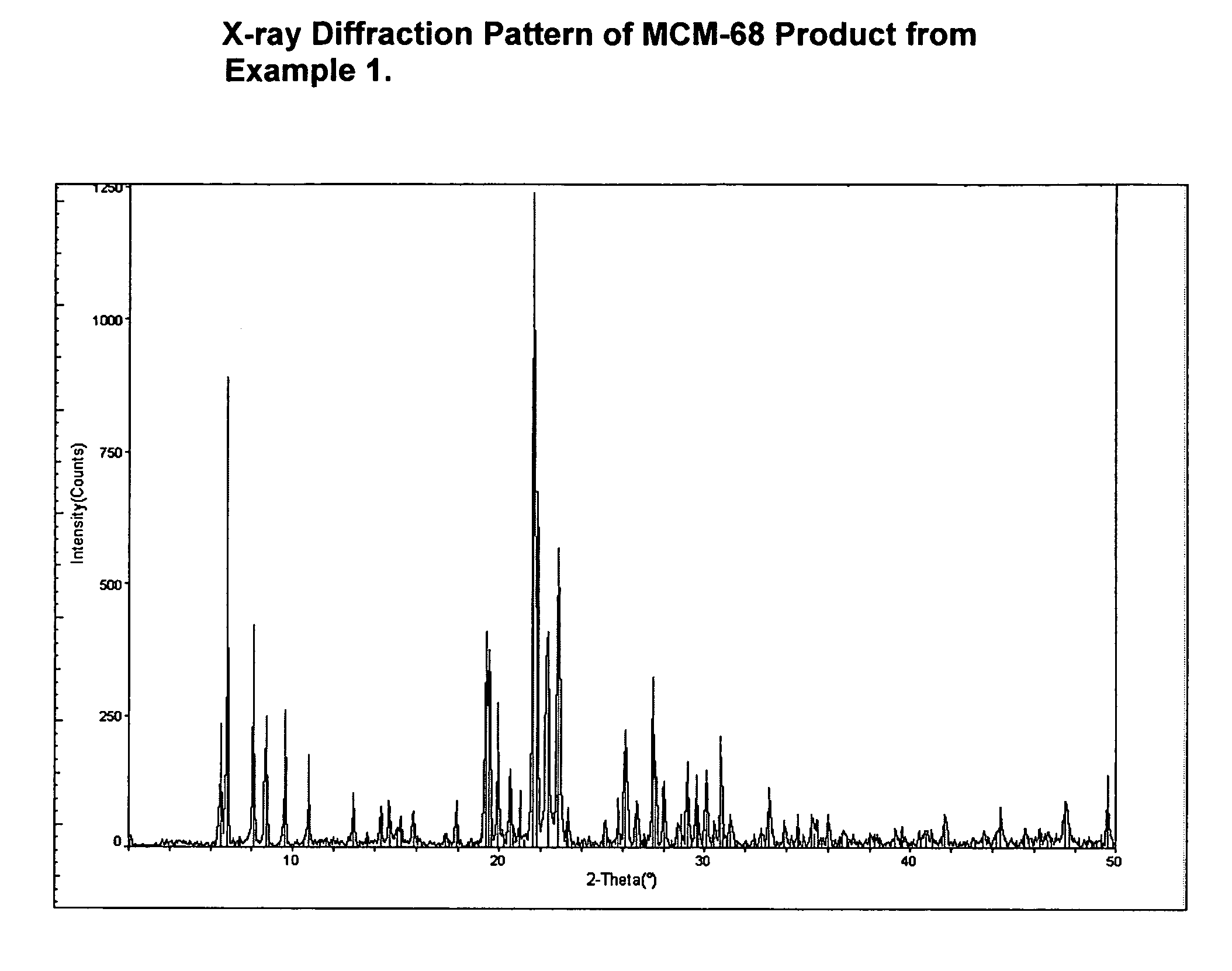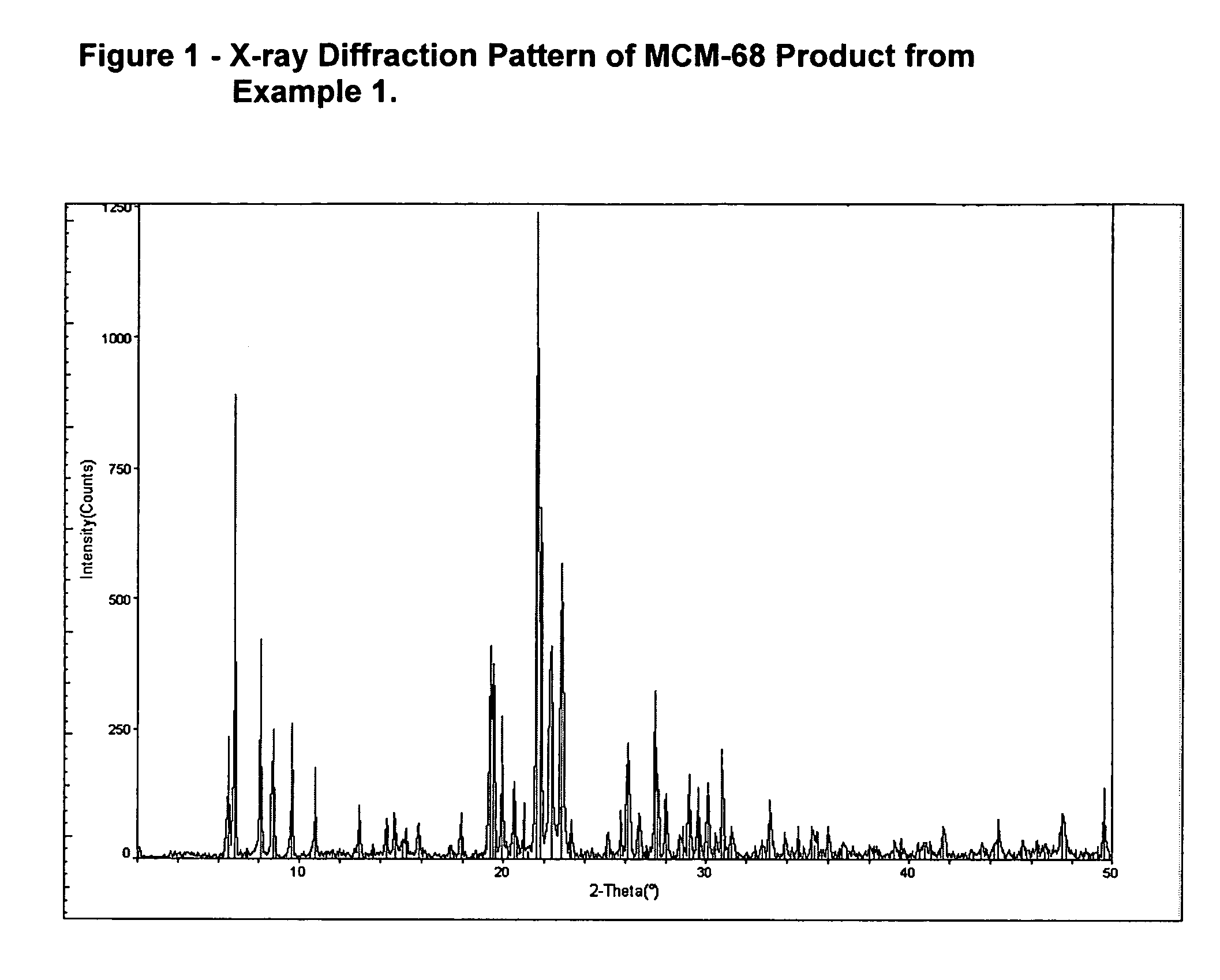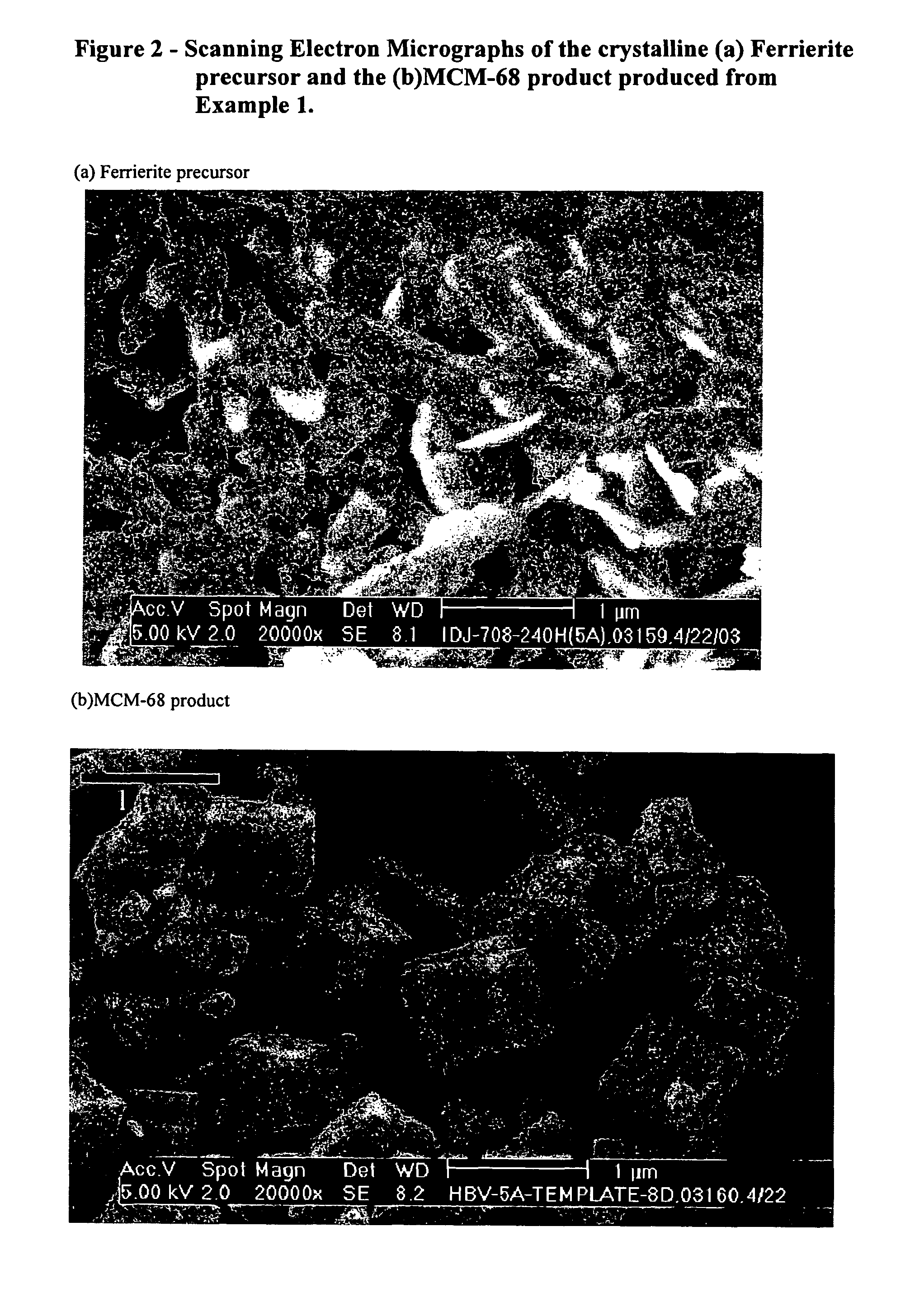Perturbed synthesis of materials
a technology of materials and synthesis, applied in the field of material synthesis, can solve the problems of not being intentional in the composition of the gel, requiring processing of the initial crystalline phase, and increasing the cost of using zeolites or other crystalline phases as raw materials,
- Summary
- Abstract
- Description
- Claims
- Application Information
AI Technical Summary
Benefits of technology
Problems solved by technology
Method used
Image
Examples
example 1
Crystallization of MCM-68 Through Ferrierite (IDJ-708)
[0033]A reactant gel was produced composed as follows: 46.78 g water, 29.82 g colloidal silica (Ludox SM-30), 1.29 g Al(OH)3, and 13.7 g of a 20% by weight KOH solution. The gel was divided into 8 autoclaves, loaded into the tumbling oven and rotated at 60 RPMs while at 160° C. After 240 hours, a sample was removed for analysis. This product was identified as ferrierite by X-ray diffraction. The measured K / SiO2 molar ratio of the ferrierite was 0.109. 1.1 g of N,N,N′,N′-Tetraethylbicyclo[2.2.2]oct-7-ene-2,3:5,6-dipyrrolidinium Diiodide (“diquat”) was added to the remaining slurries. One of the crystallizations at 160° C. was continued in the tumbling autoclave for 8 days. The final product was removed and analyzed and identified by x-ray diffraction as MCM-68 (See FIG. 1). Scanning electron micrographs were taken of the intermediate sample showing the morphology of the crystalline ferrierite precursor. (See FIG. 2). Included in F...
example 2
Crystallization of MCM-68 and β Though Ferrierte
[0035]A reactant gel identical to that in Example 1 was produced as a repetition. The measured K / SiO2 molar ratio of the ferrierite in this run was 0.124. The final product after addition of the Diquat was identified as a mixture of beta and MCM-68. This demonstrates the sensitivity of the MCM-68 synthesis to reactant gel composition.
example 3
Sensitivity of Reactant Gel
[0036]Comparative example exploring the sensitivity of the reactant gel to the amount of KOH present was produced. A reactant gel was produced composed as follows: 230 g water, 146 g colloidal silica (Ludox SM-30), 6.8 g Al(OH)3, and 76.7 g of a 20% by weight KOH solution. The targeted K / SiO2 molar ratio was calculated at 0.367. The gel was divided into 6 autoclaves, loaded into the tumbling oven and rotated at 60 RPMs while at 160° C. After periods of time of 24, 48, 96, 192, and 360 hours, samples were taken and identified. At times greater than 48 hours, dense KSiO2 phases and quartz were observed, no ferrierite was observed at any time. The 2 g of N,N,N′,N′-Tetraethylbicyclo[2.2.2]oct-7-ene-2,3:5,6-dipyrrolidinium Diiodide was added to the slurries. The crystallizations at 160° C. were continued in the tumbling autoclaves for up to 8 days. The final products were removed and analyzed by x-ray diffraction. The 24 and 48 hour gels that had not crystalliz...
PUM
| Property | Measurement | Unit |
|---|---|---|
| pressure | aaaaa | aaaaa |
| molar ratio | aaaaa | aaaaa |
| molar ratio | aaaaa | aaaaa |
Abstract
Description
Claims
Application Information
 Login to View More
Login to View More - R&D
- Intellectual Property
- Life Sciences
- Materials
- Tech Scout
- Unparalleled Data Quality
- Higher Quality Content
- 60% Fewer Hallucinations
Browse by: Latest US Patents, China's latest patents, Technical Efficacy Thesaurus, Application Domain, Technology Topic, Popular Technical Reports.
© 2025 PatSnap. All rights reserved.Legal|Privacy policy|Modern Slavery Act Transparency Statement|Sitemap|About US| Contact US: help@patsnap.com



